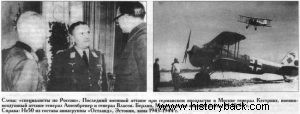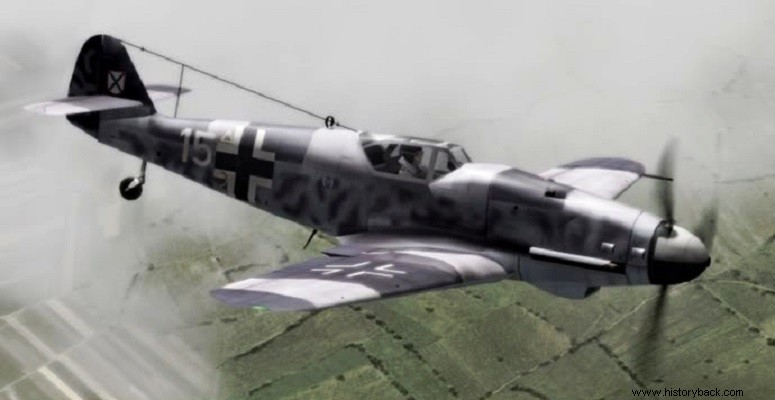
Soviet nationals served in the German armed forces by the thousands after the German invasion of the USSR. Many of them were prisoners who preferred cooperation with the enemy to a slow, torturous death by starvation. Some were conscious anti-communists, others mere opportunists.
Usually the Soviets were assigned to the German divisions as auxiliaries (Hiwis), or formed their own units by nationality (eg Ukrainians, Cossacks, etc.) or ideology (anti-communists, nationalists). Among the most unknown and rather paradoxical units formed by the Germans with Soviet prisoners were the airmen.
As early as 1942, Soviets were flying Luftwaffe units. In Belarus, a squadron equipped with Polikarpov Po-2 biplanes was even formed to fight against the partisans. In October 1943 Lieutenant General Walter Hotlers formed the "Holters Detachment" with Soviet engineers and technicians. In December of the same year, with the help of colonel and then lieutenant general Viktor Malchev, the 1st "East Swarm" (Russian) in Daugavpils, Latvia.
The unit was equipped with various aircraft – German Heinkel He-50 and He-46, Arado 66, Gotha 145, Soviet Polikarpov I-15, I-153 and Po-2 and Yakovlev UT-2 – and were used in night operations mainly attacks against the Soviets until July 1944 flying over 500 combat missions. The squadron lost three aircraft in operations and nine pilots, several in accidents.
All these Soviet airmen had joined the anti-communist "Russian Liberation Army" (ROH). The air division of the ROH (1st Air Regiment) had a strength of 7,500 men and was commanded by Malchev. The regiment – then division – extended seven squadrons, one reconnaissance, one transport, one close support (later night bombing), one bombardment, one training, one military cooperation and one fighter (Me-109 G fighters). Also integrated into the unit were the 9th Anti-Aircraft Regiment, a relay section and a paratrooper battalion. The men wore standard German Luftwaffe uniforms with the ROH crest.
Total allocated:18 Messerschmit Bf-109G-10, 14 Ju-87D Stuka, seven He-111 bombers, two military cooperation aircraft Fi-156 and five U-2 and two Bf-108. There are also reports of the disposal of Hs-129 and Do-17 aircraft. From March 1944 Soviets were also used to man volunteer anti-aircraft units. These men then joined the SS. Many Soviet ones were also used in auxiliary services.
A typical example of a Soviet Luftwaffe pilot is Semyon Trofimovich Bykov. In July 1942, after an accident, Bykov was sentenced by a military court to five years of forced labor. A few months later he was spared the sentence and returned to active service becoming, by August 1943, an ace with 17 kills, also winning the coveted title of Hero of the Soviet Union.
On December 10, Bykov was shot down by German anti-aircraft fire and pulled from his plane unconscious. Eventually he escaped death and was sent to a POW camp. There, in early 1944, Malchev found him and convinced him to join the 1st Regiment of the ROH. He later claimed that he succumbed to pressure.
He fought for the Germans at the head of the night bombing squadron and at the same time participated with his friend Antilevsky in a recruitment operation of other captured Soviet pilots. It appears that both fought against their countrymen on the Oder front in April 1945.
Bykov was eventually captured by the Americans who handed him over to the Soviets. On August 24, Bykov was tried and sentenced, for the crime of treason, to death. He was executed on November 4, 1946 after his pardon application was rejected. A similar fate was shared by Andilevsky and Malchev and the vast majority of Soviet pilots and technicians who fought for the Germans.
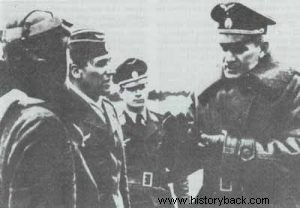
Malchev (right).
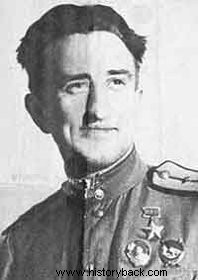
Andilevski.
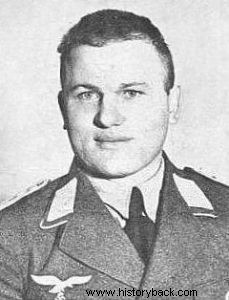
Bykov.
